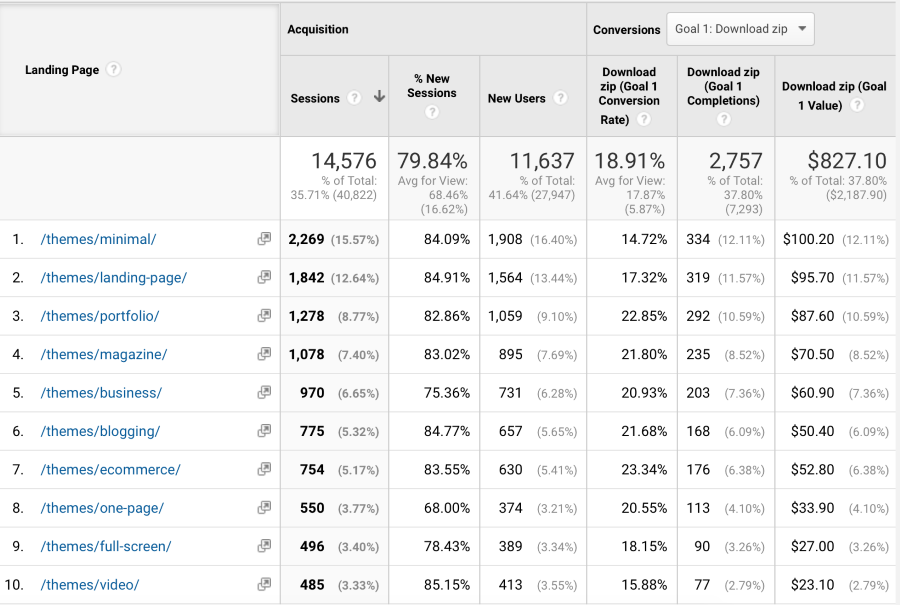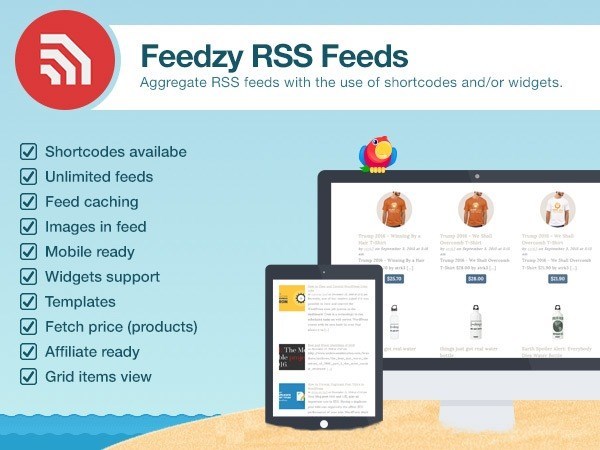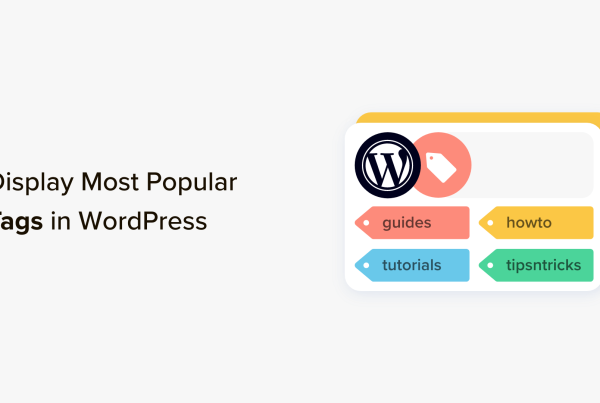Welcome to the 23rd edition of our monthly transparency report (for December 2016). In this series, I talk about my experiences running a WordPress business and things related. Check it out if you want to see what’s been going on behind the curtain at CodeinWP, ThemeIsle, and Revive.Social. Click here to see the previous reports.
Improving my focus in 2017
I’m probably not the first person you hear saying this, but with 2016 over it’s probably time to reflect on the things that were going on and what we can do to improve on them in 2017.
I haven’t had a chance to do a full, top-to-bottom review of the year yet (stats-wise), but I’ve identified a few things that I want to change in how I work. You could say that most of those involve my personal way of handling work and not as much company-wide adjustments. However, I believe that at the current stage of the company, my involvement and commitment is very important (after all, I am the highest paid person here, so let me earn that paycheck properly!).
First off, I can’t say that I’m a born leader. Or at least I don’t feel like one. I consider myself an introvert, but I’ve just been curious enough not to think about the awkwardness, and instead just focus on how I can effectively build my business. This has eventually landed me in the position of a company leader, hiring people and looking out for everyone’s common good (in the team). Okay, but why am I telling you all this? Bear with me; I hope it’ll all become clear in just a minute.
Something I realized a long time ago was that I have a tendency to avoid conflicts (even when a conflict could very much be what’s needed) and also a fear of what others might say or think of me. I guess we all have that to some extent.
Anyway, those fears have made me afraid of making certain decisions, even though they might be good decisions, simply because I was worried of what my employees/partners/clients would think.
Just to give you one example, when I used to work with clients, I used to favor the more “aggressive” ones, just to avoid potential issues. Long term, that was surely a bad thing for business. Another thing that I tend to do is focus mainly on the things that I like doing vs the things that the company really needs at the moment.
This is surely something I want to improve on in 2017. For instance, I believe that the team needs more guidance in certain aspects and more clarity on the company’s vision.
A small thing that I already started doing is grouping tasks in batches, based on the main common goal for all of them (sorry, I know this might not sound clear if you’re not seeing our Redbooth). I’m also encouraging everybody to avoid multi-tasking and have more clarity when working on whatever task’s at hand. I’m also trying to have the same guidelines in mind when handling my own things. Which brings me to my next point:
Is JustFreeThemes here to stay?

JustFreeThemes is a project we started (or rather took over) basically exactly two years ago. I’ve always treated it as a “side thing” (probably one of my mistakes). I’ve been willing to let things develop naturally or even by themselves, and then planning to step in once the site starts getting some traction.
Anyway, in the last days, I finally decided to spend some time looking into it more deeply and searching for different angles and opportunities.
Here are my insights (they could be useful if you’re working on a business of your own that’s of similar nature):
Some backstory: The site’s original name was FreeWPThemes.in. I used to advertise one of our free themes there, and I don’t really remember how, but I ended up talking with the previous owner about the possibility to acquire the site. In Jan 2015, we went through with the deal, and I got it for $1000 … so not a lot.
Right off the gate, I think we started well. We added schema.org markup to the site, rankings, optimized titles and descriptions, demo sites under iframes, and got a new domain for the whole site – a more generic one – JustFreeThemes.com. Madalin took charge of the project – managing it all and taking care of adding new themes.
Being passionate about the topic as a whole and feeling a bit frustrated with the imperfections of the official WordPress.org directory, I simply wanted to give people a place where they could see reliable theme demos, just like the developers intended them to be seen, instead of looking at some subpar sample data.
I had plans to do much more with the site, and I would have loved to devote extra time to it, but considering the state of the project and its potential, it just didn’t make any sense to do anything more until it got at least 10x more traffic.
So, fast forward to today, and … not a lot has changed. JFT is still a rather small project revenue-wise (around $1000/month), but I’ve finally got to grasp with the reality that it won’t ever add up to anything if I don’t spend sufficient time working on it, no matter how small it might be.
So the first order of business has been to really understand how people use the site, how it can grow, or at least to learn what it takes to build a better themes search engine.
When it comes to traffic, here is the progress of the project so far, from the day we got it, until now:

The last month alone saw 30,000 theme downloads through the site.
…
Take it with a grain of salt, since my opinion is obviously biased, but I see JFT as the best alternative to the WordPress.org repo on the web today. (Note. I’m not saying that it’s necessarily better than the repo itself, but it is the best alternative.)
Every day, we’re trying to make everyone’s experience with the site better, including both the end users, and the theme authors.
For the former, we’re working on improving the screenshots and how we present the themes, improving the descriptions, and providing better demos overall (presenting more types of pages/posts, etc.). For the latter, we’re making it possible to have a theme listed on the site in around 1 month’s time for free, or to pay a fee to move it higher up the list and get it online in a couple of days (we still review and check everything).
Anyway, considering all the analysis that I’ve been doing around the site recently (analytics, heatmaps, etc.), I want to share a couple of ideas and conclusions with you as to what’s important in a theme directory.
But why would you care, right?
First, I believe that most of those tips are also applicable to WordPress.org. Secondly, as a direct result of the former, these insights can help you make your theme more visible in the WordPress repo:
- The screenshot is crucial. From what I’m seeing, the CTRs for the themes vary from 0.5% to 5% based on the screenshot alone. In other words, you can improve your theme’s CTR by as much as 1000% if you just get a better screenshot.
- Also, split test your screenshots. Probably split test them more than you’re split testing anything else. Obviously, the screenshot shouldn’t be misleading, but it needs to be attractive.
- Each theme can benefit from multiple screenshots, but in a different way than you’re thinking right now. Basically, I don’t mean having a carousel of screenshots or something. What I mean is that in the age of multi-purpose themes, we need different screenshots for the same theme based solely on the category that the user is browsing (if we want to still have representative screenshots). For example, the same theme should use a different screenshot when viewed in the eCommerce category vs when viewed in the business category.
- Theme directories are not Google, page #2 is not dead. Compared to other niches, people click a lot when it comes to looking for their perfect WordPress theme. We have 20 themes per page at JFT, and 18% of the people still visit page #2. Moreover, we often see themes on the 20th position getting the same clicks as themes on the 1st.
- We asked our visitors if they care that a theme has a lite and a pro version. 49% of them don’t care.
Building a better search engine for WP themes
Around 5% of the visitors use the search feature at JFT. This is not much, granted, but I believe we could still benefit from a more prominent search bar (and WordPress.org could too).
Most of the searches are very generic. I suppose this is the case with WordPress.org as well. Our most popular searches are portfolio, blog, business, video, one page, music, and magazine.
The thing to do here would be to start tracking those searches in order to understand what works and what doesn’t, and whether users are finding what they’re looking for (understanding the real user intent behind the searches).
Having that data is the first step to improving anything related to search. For instance, I believe that if the WordPress.org team had started with an approach like that, the recently introduced theme tags would have looked differently (they would have been more aligned with users’ expectations).
Anyway, things are becoming complex with search as a whole. After all, Google has been built purely on the idea of getting search right, so we shouldn’t neglect it even if it seems to be just a small part of our sites.
The default search at JFT is currently sorted by relevance, taking the date into consideration as well. I believe this is also how the search at WordPress.org is done. So let’s see how we could improve it:
- Remove stop words from the search engine, like: WordPress, theme, even responsive.
- Track some form of engagement resulting from the searches.
- The total number of downloads is not as relevant, IMO. For example, maybe theme A is a great business theme, but an awful eCommerce theme, so all engagement metrics should be tracked on a per-category basis.
- Text relevancy is an awful search ranking factor. For example, a theme named “Business” doesn’t necessarily need to be the best result for people using “business” as their search term.
That whole mysterious “engagement” is actually rather problematic.
I mean, tracking engagement can be tough.
For instance, if we’re talking free themes, tracking downloads as engagement can be easily gamed (it happened on WordPress.org), and it’s also not a real satisfaction metric. Basically, all it tells you is how good a given theme’s marketing is. Same with ThemeForest, where sales numbers are not the end metric, lifetime usage or active installs are, and this is what Envato will likely measure with Envato Elements.
Tracking only sales as a measure of success will naturally encourage authors to focus on selling and not on retention or long-term customer satisfaction, which is wrong. Users can realize that a theme is not that great after 1 month of actually using it (in a production setup), for example, but they cannot really rate it low or ask for a refund at that point.
Moreover, most of the traditional metrics of success are purely quantitative in nature. Visits, downloads, shares, etc. … while they all add up nicely, it also matters to have a qualitative success metric. For JFT, it’s the percentage of users who have downloaded a theme. Currently, we’re at around 20%, and we want to grow that number to 25% this year.
We have already identified categories where the content is not that great and the conversions are much lower, but, on the other hand, we have also learned that users who have performed a search convert at 32% … just to emphasize the value of a good search engine once more.
In general, here are JFT’s most popular categories and their corresponding download conversions (one week’s worth of data):

For reference, the homepage conversion is at 14.55% – something you can’t see in the screenshot.
New themes in the repo, do they get a chance to shine?
When running a theme directory, you also need to make sure that new themes can get their fair shot at proving themselves. For that, they need to be made public in certain time intervals that can give them sufficient “air time,” so to speak, before another new theme goes live.
For example, right now, the themes at WordPress.org go live as soon as they get approved by an admin. A better solution, I think, would be to add every newly approved theme to a queue, and then get those new themes rolled out to the public at the rate of, say, 2 per day, or whatever the volume is. The reasoning is that having 10 themes published in a day, and then nothing for the next week really makes the space too crowded for any of those themes to get sufficient attention from the visitors.
As you can see, there are quite many challenges to take care of, but hopefully we’ll address many of them in 2017. A better and smarter internal search would surely help us at JFT and would open the doors to new and more interesting things – like a JFT plugin, for example.
A plugin like that could enable users to search and preview free themes right in their WordPress dashboard (95% of our users said that they would like that), which would hopefully encourage people to come back more often to see what’s new.
(If there’s anyone here who would like to work together on that, please don’t hesitate to let me know. It should be an interesting REST API project.)
Overall, there’s still a lot that can be done with JFT to make it into a superior theme directory. We still rely mostly on WordPress.org listed themes (which are reviewed carefully and thus more trustworthy), but we still don’t give enough credit to the authors – there aren’t even any author accounts on the site. However, we’re really trying to bootstrap the project to success and put more work on it in 2017.
This surely is one big learning experience for us, and hopefully also a way to push ideas to the WordPress.org team, so that the default search becomes better too. And here it is, we have our vision.
What about our other products?
Okay, so I might have made this report 90% JFT centered. To balance it out a bit, let me share some other product-related updates:
We’ve just released a premium version of Feedzy – a plugin that lets you display RSS feeds in your posts, pages or custom content types.

Everything’s responsive and mobile friendly, you can have unlimited feeds, import images from feeds, there’s feed caching, widgets support, feed templates, and the whole output is affiliate-ready. Really cool, and it has cost us a lot of work. The sales are going strong so far! (More on that another time.)
We’re continuing to experiment with marketplaces. We’ve just released TheMotion on MojoMarketplace and Hestia Pro on ThemeForest, check out the product video, by the way:
The sales for Hestia Pro are … what’s the word … awful at the moment, but the free version works really well. In general, having a theme alongside 5000 others in a huge marketplace makes sales tough. Some people have been asking me if the situation is good or bad. Well, I see ThemeForest just as a new distribution channel, so any number of sales that we get make it worth it. Theme-development-wise, there is basically no extra effort, the ThemeForest guys are simply providing us with a great QA input.
“Zerif Lite back in the repo!”
… was my initial reaction.
But as it turned out, the theme only came back for 1 day and by mistake. We’ve been trying to work with the TRT for 2-3 months to do the required fixes and get the theme back permanently, but I’m still not sure if we’re ever going to reach a consensus (or at least soon). Nonetheless, it’s still worth trying since we have found a common ground in terms of how not to affect existing theme users and still get the issues fixed.
One more quick word re the previous transparency report. So as you might know, I travelled to Cuba right after WCUS to have some time off. Setting aside the fun things, I’ve also learned that CodeinWP.com doesn’t work there because it’s hosted on Google Cloud, I suppose (hear this, Kinsta?). Anyway, I’d like to thank the team for jumping in and sharing their insights for the report, and I hope you all found them useful.
As always, thanks for reading and for supporting CodeinWP! Stay updated and get new reports delivered to you by subscribing here:
All edits and witty rewrites by Karol K.












